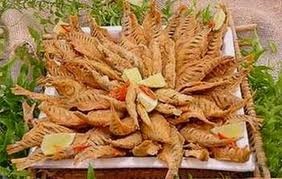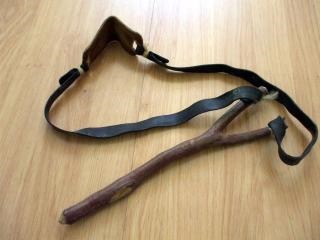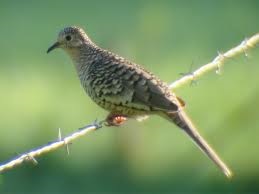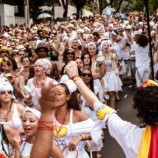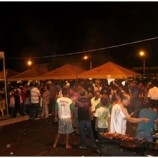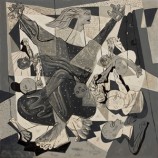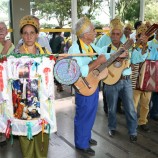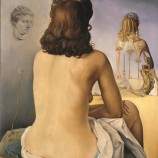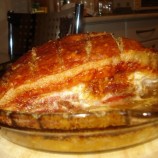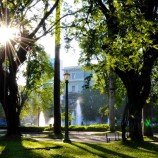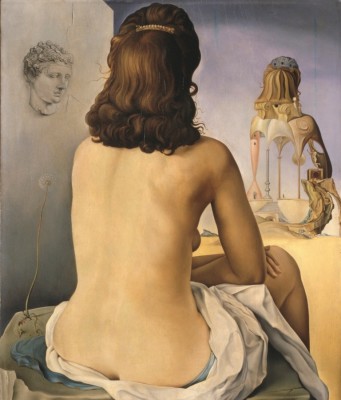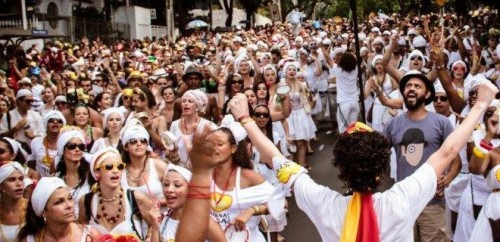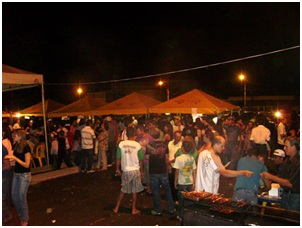Back in the old days, from 1950 to 60, one of our favorite past times was to either go fishing or hunting.
We learned all the ups and downs of fishing at an early age. We knew everything from how to bend metal pins into hooks of all sizes to melting pieces of lead for sinkers, the weight that holds the hook down in the water. And lastly, knots from the simplest to the most sophisticated shaped gallows-knot. When necessary, we would trance small wire lines together, especially for the treacherous trahira fish with its tremendously strong dental arches that’ll sever any normal line. Line was generally leftovers from various string reels, as nylon was still unknown to us. Our little fishing rods were of firmly aged bamboo, well-trimmed and toasted in oven flame to make more resistant and sensitive. Scouring for worm-bait was our specialty. We knew how to find them easily by digging around humid land parches and middens of organic waste around the yard.
Then it was a matter of going downstream and choosing a pool. We learned to identify where the catfish and trahiras took refuge and the little torrents home to the little minnow fish we called piabinhas. Then it was quite a party at home. First we had to clean the fish from largest to smallest, some over 20 centimeters long. Then we cleaned out the little nigglings of the piabinhas starting with the largest down. Only those who have ever had the opportunity to enjoy a portion of crispy fried piabinhas know the pleasure it is to catch, clean, fry and savor them among friends.
Sometimes it was just our way of getting a supplement or “side dish” for the everyday beans and rice at home. We even had a bamboo sieve used to capture larger amounts of fish especially in larger ponds and waterholes formed after the rains. But generally it was a recreational thing for us and whenever possible we invited other men, women and children with whom we stayed out until late at night, socializing in what seemed something like a friendly picnic.
The “wrist-rocket,” a kind of harpoon made of a sharply-pointed slice of bamboo was more of a competition than anything else and we hardly ever really hit anything with it. In absolute silence we snuck up as close as possible to the fish and zaz! Sunday was fish market day and a time when we could really steep in pride as another boy usually visited from the big city and accompanied us on our fun.
Now, hunting was a much rarer occasion. We made slings and slingshots which in my town were known as bodoques.
With a pair of strips cut out of rubber inner tubes from tires, preferably from smaller cars, one inch wide and about 30 cm long, a piece of soft leather 2.5 per 5 cm cleverly cropped to fit the “projectile” of choice; stones, broken tiles or old marbles, sometimes steel balls; firmly fastened onto a Y shaped branch from a guava or jabuticaba tree which served to stretch the rubber and launch the “projectile.”
We went out to hunt colombina birds, a species known as bean broth birds, fogo apago or pedrezes, juritis, true or torcal doves, the latter being very rare, inhambus, quail and, once or twice a lifetime, partridges. Well-cooked and cleaned, colombinas are so good you can even munch down on their little bones. Scrumptious! We cooked up the rest of the prey like yard chickens (that was the way to raise chickens back then, loose in the yard).
After we grew a bit older, after twelve or thirteen, we were able to use a muzzle loading black powder rifle.
Purchased in town hardware stores or made at home, they were always a hazard. A higher awareness was required for the use of this weapon. The rifle bought at local general store came with a loading rod. Loading was done by sliding in a portion of gun powder, then a fabric patch which had to be pounded down tight, one portion of 5 or 6 lead BBs and another patch. You could even use newspaper. The second patch could not be pounded, only adjusted to hold down the BBs. If you pushed it down too much it risked breaking the tube, especially when homemade from umbrella pole tubes. In the “bore” of the rifle, that little tube engaged at the base of the muzzle in direct contact with the gunpowder, the fuse was set. When we had no fuse, fire was set directly with a lighter or matchstick.
With the rifle, we killed animals at such as rabbits, guinea pigs and, once, a small deer. We also fired at animal predators such as the opossum, the tegu, snakes and small hawks that threatened the henhouse.
Then came the cast nets for fishing, reels, shotguns, harpoons and the batinho, a sort of mini harpoon, a slingshot attached to a thick braided line shot with a rifle.
Everything was much more fun in those days, the good ol’ days.
Related Articles


